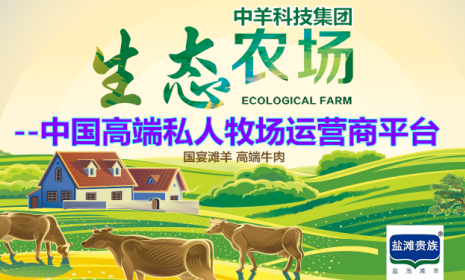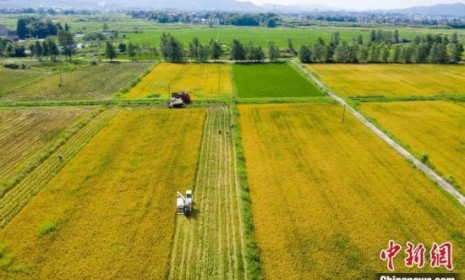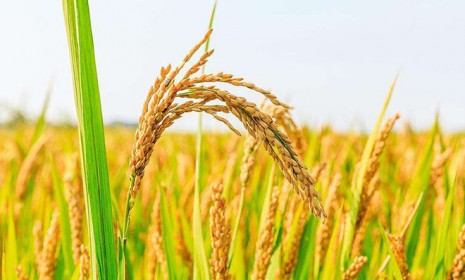近日,水产学院李大鹏教授团队联合经济管理学院与中国科学院水生生物研究所,在Reviews in Aquaculture杂志上发表了题为“Assessing Changes in China's Pond Water Quality From 1989 to 2020: Implications for Green Development in Aquaculture”的研究论文。该研究系统综述了我国池塘养殖发展历史,分析了1989-2020年间池塘水质变化规律,综合评估了池塘水体健康状况,并结合相关政策和研究进展等阐明了影响池塘水质变化的潜在因素,证明了实施生态优先渔业方针对促进水产养殖业绿色高质量发展的有效性,为全球水产养殖业蓝色转型提供了中国成功经验。
中国作为水产养殖的发源地,自1989年至今养殖产量均位居世界首位。中华人民共和国成立以来,根据发展方针不同,我国渔业经历了“以捕为主”、“以养为主,养捕结合”和“生态优先,以养为主,养捕结合”的三个阶段。池塘养殖作为主要养殖方式,为我国国民优质动物蛋白和不饱和脂肪酸等营养物质的供给做出了巨大贡献。然而池塘养殖的快速发展给环境带来了一定程度的压力,如高密度集约化养殖造成的水质问题。进入新时代以来,相关部门、科研院校和养殖单位等实施了多项改革举措、科学研究、技术革新,来促进水产养殖业绿色发展。如农业农村部等十部门于2019年联合印发《关于加快推进水产养殖业绿色发展的若干意见》着重强调了水产养殖的生态属性。但目前缺少系统的数据分析来评估水产养殖的生态健康情况。因此,开展大范围、持续性的养殖水体水质监测,综合评价养殖活动对养殖水环境的影响,评估当前水产养殖业发展的生态效果,对未来优化渔业管理措施具有重要参考意义。
为此,研究人员通过meta analysis评估了时间、空间、物种等尺度上池塘水环境变化趋势,并使用ARMA模型预测2035年池塘水体健康状况。年际尺度分析表明1989年到2012年间池塘水质随集约化养殖的兴起而下降,同时夏秋养殖旺季池塘水质受损程度较高;2013年后池塘水体健康状况有所好转。空间尺度分析表明养殖池塘CCME-WQI(水质综合评价指标,值越大表示水质越好)值呈现出由北向南、由东向西递增的趋势。物种尺度分析表明,鱼类、甲壳类和软体动物等多类别混养池塘水质优于鱼类养殖池塘。模型预测结果显示,2035年池塘CCME-WQI值比2020年提高57%。通过分析养殖池塘水质驱动因素发现水质变化与管理政策、养殖方式、社会条件等密切相关,其中池塘养殖方式的转变是主要原因。
近年来,池塘工程化循环水养殖、多营养层次生态养殖、鱼菜共生等生态工程化养殖方式的应用推广,水产种业、营养饲料、病害防控、水质调控等科技的进步,以及基于生态优先的各种管理举措共同促使池塘养殖朝着绿色发展。纵观30多年的养殖池塘水质变化,基于国家生态文明建设总体布局,随着水产养殖业绿色发展政策实施、绿色养殖新技术和创新模式的发展推广,池塘养殖可以与自然环境和谐发展、相得益彰。相信在不久的将来,中国渔业生态环境将得到持续改善,水产养殖业也将迎来更加广阔的发展前景。本研究证实了我国生态文明理念、水产养殖生态优先和绿色发展原则对养殖池塘水体健康状况管理的有效性,也为全球实现水产养殖业绿色健康发展提供了实践依据。
华中农业大学水产学院博士生段元帅为论文第一作者,李大鹏和中国科学院水生生物研究所张志敏为论文共同通讯作者。该研究得到了国家重点研发计划项目、国家大宗淡水鱼产业技术体系、国家自然基金等项目资助。
【英文摘要】
Since 1989, China has become the world's largest aquaculture producer through pond culture, significantly contributing to global food security but potentially posing environmental threats. However, little is known about the changes in the pond water quality at broad spatial and temporal scales, thus creating challenges in the sustainability of pond aquaculture. Herein, we explore changes in water quality in China's aquaculture ponds from 1989 to 2020 and assess the waterbody's health status to optimize sustainable management strategies. This study highlights pond water quality changes closely associated with China's aquaculture practices, development, and related policies. Seasonal and regional farming variations significantly impact water quality, with peak aquaculture seasons and Central China and North China associated with the lowest water quality scores. Pond water quality initially declined with the rise of intensive aquaculture but improved after 2012 with the adoption of ecological engineering measures, eco-farming practices, and policies supporting green development. Under a scenario combining these efforts, the water quality score in 2035 is projected to increase by 57% of the 2020 level. These findings reveal that national ecological initiatives and advancements in green aquaculture techniques and public policies can significantly enhance the water quality of China's aquaculture ponds, offering valuable insights into environmental governance in global agriculture.
【文章链接】https://onlinelibrary.wiley.com/doi/full/10.1111/raq.12997
日期:2025-02-03


















